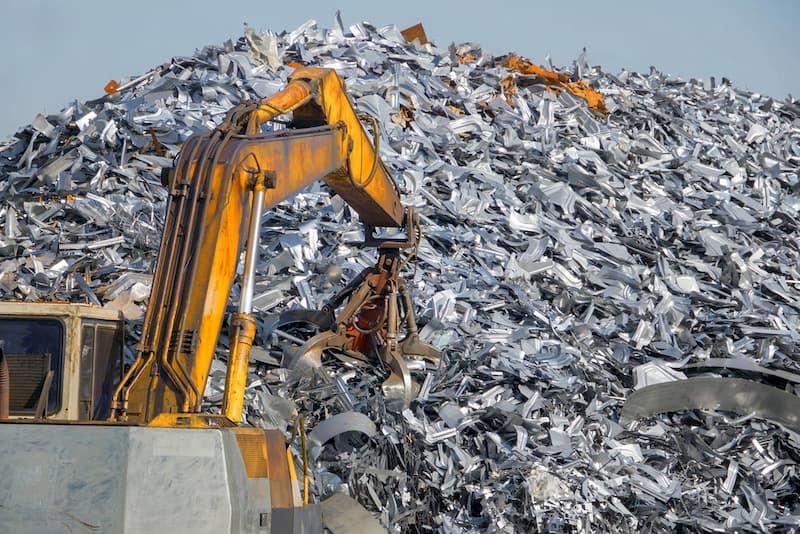The Complete Guide to Scrap Metal Recycling
The Complete Guide to Scrap Metal Recycling
Blog Article
Scrap metal recycling plays a significant role in preserving our planet. With rising concerns about resource depletion and environmental sustainability, recycling metals like aluminum, steel, and copper has become more important than ever. But what exactly is scrap metal recycling, and why should you care about it?
This blog will cover everything you need to know—from understanding the types of metals commonly recycled to the many benefits of this practice, and even how to get started with recycling yourself.
What Is Scrap Metal Recycling and Why Is It Important?
Scrap metal recycling is the process of recovering and repurposing metal materials that are no longer in use. Instead of allowing these materials to sit in landfills where they take decades or even centuries to decompose, scrap metal recycling gives them a second life.
This process not only conserves raw materials like iron ore and bauxite but also reduces the energy and environmental cost of mining new metals. According to the Environmental Protection Agency (EPA), recycling metals conserves 95% of the energy required to produce aluminum from raw materials and 60% of the energy needed for steel production. It's a win-win situation for both businesses and the planet.
Types of Scrap Metal Commonly Recycled
When it comes to scrap metal, you're likely to encounter two main categories:
1. Ferrous Metals
Ferrous metals contain iron, making them magnetic. These metals are highly durable and commonly found in construction and industrial applications. Examples include:
- Steel beams
- Cast iron pipes
- Automobile frames
2. Non-Ferrous Metals
Non-ferrous metals do not contain iron, making them lighter and resistant to corrosion. They’re used in a variety of applications, including electronics and household items, and are usually more valuable than ferrous metals. Common examples include:
- Aluminum (e.g., soda cans, window frames)
- Copper (e.g., wiring, plumbing pipes)
- Zinc and brass (e.g., fixtures and batteries)
Knowing the type of metal you have can help you determine its value and where to recycle it.
The Benefits of Recycling Scrap Metal
Environmental Benefits
- Reduces landfill waste: Metal recycling ensures fewer products end up in landfills, preserving valuable land space.
- Reduces emissions: Recycling metals reduces greenhouse gases associated with mining and metal production.
Economic Benefits
- Creates jobs: Recycling centers and facilities provide employment opportunities.
- Encourages circular economies: Businesses that recycle metals reduce material costs and dependency on raw resources.
Personal Benefits
- Get paid for scrap: Many recycling centers offer cash for scrap metals, turning “junk” into a profitable resource.
- Declutter your space: Recycling responsibly helps clear out garages, sheds, and industrial sites.
How Scrap Metal Recycling Works
Step 1. Collection
The process starts by gathering scrap metals from various sources like households, construction sites, and factories.
Step 2. Sorting
Machines and manual labor sort metals into categories (ferrous vs. non-ferrous). Advanced technology like magnetic separators is often used to differentiate metals.
Step 3. Processing
Metals are cleaned and shredded for easier melting and smelting. They may also undergo chemical treatments to remove impurities.
Step 4. Melting
The shredded metals are melted in a furnace designed for the specific material. For example, aluminum melts at a lower temperature compared to steel.
Step 5. Refining and Solidifying
The melted metal is purified and then poured into molds to form blocks or sheets, ready for reuse.
Finding Scrap Metal Recycling Centers Near You
Online Directories
Many websites, like Momerecycling, allow you to search for recycling facilities nearby by simply entering your location.
Local Waste Management Services
Most cities have waste management programs that partner with metal recyclers. Check your city’s website for details.
Mobile Apps
Some apps can help you locate nearby recycling centers while providing real-time updates on metal prices.
Tips for Preparing Scrap Metal for Recycling
1. Separate Your Metals
Separate ferrous from non-ferrous metals to maximize the value of your scrap. Non-ferrous metals are typically worth more.
2. Remove Non-Metal Components
Scrap yards may not accept items with non-metal parts, such as plastic or wood. Remove these before recycling.
3. Clean Your Scrap
Clean metal scrap is often worth more. Remove excess dirt, grease, and other residues.
4. Flatten Large Items
Save space by flattening bulky items like pipes or cans. Some facilities offer higher rates for compacted scrap.
5. Check Regulations
Certain items, like electronics or batteries, may have specific recycling guidelines. Always check local laws and regulations.
Making a Difference Through Responsible Recycling
Scrap metal recycling isn’t just about decluttering or earning a bit of extra cash. It’s a crucial practice for fostering sustainability, reducing environmental damage, and promoting a circular economy.
Start small by identifying sources of scrap metal in your daily life and taking them to a local recycling center. Every step you take helps fight climate change and conserve resources for future generations.
Are you ready to create a greener future? Begin by finding a scrap recycling center near you or implementing recycling practices in your business today.
Scrap Metal Recycling Guide for Beginners
 Report this page
Report this page